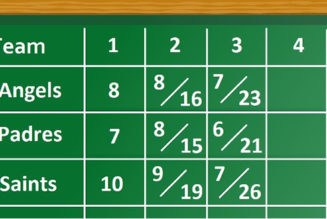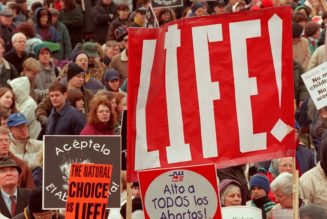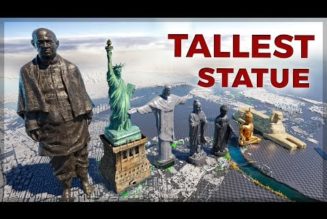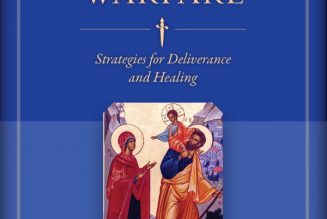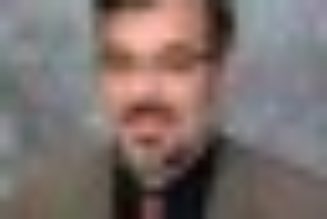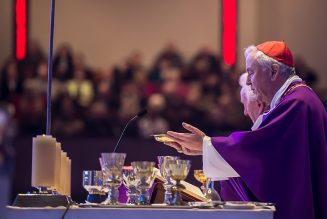As the world watches Ukraine right now, keep your eyes on Poland.
Poland has had a special place in the history of the last 100 years, from turning back Russian communists at the Miracle on the Vistula in 1920 onward through World War II and the Cold War. I call Poland “the fulcrum.” Critical events of the last century pivoted around Poland.
That also meant that Poland, the most Catholic country in Europe, suffered terribly, unlike any other. Not only did its Catholics suffer, but its Jews especially. Prior to Hitler’s madness, Poland had more Jews than any nation, including what was then called Palestine.
Ronald Reagan called it “the martyred nation of Poland.” He called it that to the world’s most famous Pole, Pope John Paul II, during their first meeting together in June 1982, underscoring their “special area of mutual concern…your own homeland,” which the president described as a “brave bastion of faith and freedom.” He got no argument from the Polish pope who had experienced the very worst of Poland’s martyrdom, including among his dear Jewish friends.
Reagan also would have gotten no argument from a Polish nun named Helena Faustina Kowalska.
Faustina was born in August 1905 in the village of Glogowiec. In 1924, the 19-year-old farm girl and her sister went to a dance in a park in the cheerful city of Lodz, which, in just two decades, would be ripped to shreds by invading armies. While at that dance, the teenage Faustina had a vision of a suffering Jesus. As the room froze, she stood stunned as she said Christ himself appeared and asked, “How long shall I put up with you, and how long will you keep putting me off?”
That would be a wake-up call to anyone, would it not? After standing and then sitting motionless, speechless, shaken, the girl gathered her senses and dashed to the cathedral. What else would one do? There, she said she was told by Jesus to leave for Warsaw right away to join a convent. She did.
Faustina’s truly extraordinary religious life was a mix of torment, illness, dedication, obedience, and ecstasy. My non-Catholic friends will find it hard to imagine. That would be the reaction of anyone. After all, it was miraculous.
Faustina was every bit the mystic, experiencing terrifying but profound visions and prophecies and claiming to communicate directly with Christ and the Blessed Mother. The most lasting vision, one the world would come to see, happened on February 22, 1931, while Faustina was in her cell at the convent.
She described Jesus Christ as appearing, clothed in white, with his right hand raised as if giving a blessing to the world, while the left hand touched a garment at his breast. From the opening in the garment, exuding from Jesus’ sacred heart, were two large rays, one red and the other white, representing blood and water to heal the world of its sins. “In silence I gazed intently at the Lord,” said Faustina. “My soul was overwhelmed with fear, but also with great joy.”
The Christ figure instructed the nun: “Mankind will not enjoy peace until it turns with confidence to My Mercy.”
That was the message—for then, for now, for going forward.
Jesus asked Faustina to have this image painted and inscribed with the words, “Jesus, I trust in you.” He called for the entire universal Church to celebrate an annual Feast of Divine Mercy the first Sunday after Easter. That feast day would eventually be established, but only after a long wait. It would require the intervention of the one source who could make it happen—a Polish pope.
Much, of course, can be said about Faustina’s catalogue of recorded visions, published in her famous Diary. But among the nun’s grimmest prophetic visions, which have been increasingly on the minds of Catholics since the dawn of this new millennium, were those of Hell, war, and the end times.
“I, Sister Faustina Kowalska, by the order of God, have visited the Abysses of Hell so that I might tell souls about it and testify to its existence,” she wrote in her diary. The world had fallen so far, so deep, that it required an “Ocean of Mercy” that Jesus alone could offer. She affirmed this on the eve of war—World War II—as a vast sea of horror approached Europe’s shore.
The Polish nun could not have been more prophetic in what the world would need. And she did not live to see it. In God’s mercy, she was spared the holocaust to come. Sister Faustina was called to her eternal home on October 5, 1938. Like the Jesus she worshipped, she was only 33 years old when she died a painful death—suffering terribly at the hands of tuberculosis. She was taken a year before Hitler and Stalin took turns devouring her beloved homeland and starting World War II.
What had launched those mutual invasions of Poland from west and east in September 1939 was the blood pact known as the Hitler-Stalin Pact, signed in Moscow on August 23-24, 1939. Christ had told Faustina that the world would need an Ocean of Mercy in the period ahead. What Hitler and Stalin consummated now ensured it.
Faustina had painful messages regarding Poland, Europe, and Russia. Regarding Russia, she said that on December 16, 1936, Jesus said to her: “I cannot suffer that country any longer” (Diary, section 818).
Poland would suffer Russia much longer. The Nazis were defeated by May 1945, but the Soviets remained through 1989. The martyred nation of Poland was occupied first by fascists and then, much longer, by communists.
The extraordinary revelations made to Faustina would take time to make their way to the wider world beyond her convent. But precisely that would happen once she was canonized in April 2000, the first saint of the new millennium, by John Paul II. The Polish pope and Polish nun would be forever linked through this message of Divine Mercy and even end times.
In fact, in one of several chilling ironies in his final minutes on earth, the pope’s death on April 2, 2005, occurred at the vigil and eve of Divine Mercy Sunday, which he had instituted in 2000 at the canonization Mass of St. Faustina Kowalska. The Mass for Divine Mercy was celebrated in the pope’s room the evening he died.
Most of all, we should know about Faustina’s prophecies regarding Poland and the final coming of Christ. In one of her final messages from Jesus, she was told: “I bear a special love for Poland, and if she will be obedient to My will, I shall exalt her in might and holiness. From her will come forth the spark that will prepare the world for My final coming” (Diary, section 1732).
Some believe that spark was Karol Wojtyla himself, who as Pope John Paul II would prepare the world via what he did at the start of the new millennium with Faustina and Jesus’ message of Divine Mercy. He would set in course the process of the full unfolding of the revelation.
Here are key related messages:
Faustina said that Jesus told her in December 1936: “Speak to the world about My mercy; let all mankind recognize My unfathomable mercy. It is a sign for the end times; after it will come the day of justice” (Diary, section 848).
She said that Jesus told her in June 1937: “Write: before I come as a just Judge, I first open wide the door of My mercy” (Section 1146).
And then this in February 1938: “In the Old Covenant I sent prophets wielding thunderbolts to My people. Today I am sending you with My mercy to the people of the whole world. I do not want to punish aching mankind, but I desire to heal it, pressing it to My Merciful Heart…. Before the Day of Justice, I am sending the Day of Mercy” (Section 1588).
In 2016, Pope Francis declared the Year of Mercy, with literal “doors of mercy” marked at parishes worldwide.
Where does this bring us now? Well, truly only God knows. But the world is a mess and getting worse. And those of us who have studied Faustina, the 20th century, the Cold War, communism, and Russia would be badly remiss to not offer a few public observations. It also happens to be Lent, with Divine Mercy Sunday coming up.
Right now, the fighting between Ukrainians and Russians has been limited largely to that. If, however, Poland gets drawn in, especially by providing weapons to Ukraine—and not uniquely so among NATO members—then Poland could get drawn into this conflict, and then so could NATO and the United States.
As President Joe Biden reminded the press, Article 5 of the NATO charter says that an attack against one is an attack against all. If NATO members like Poland, not to mention the Baltic states, are attacked by Russia, then the United States, by formal treaty, goes to war with Russia, period. (Reports are that NATO member states are already sending weapons to Ukraine—states like Denmark and the Netherlands. Key perimeter states also include Romania, Slovenia, Slovakia, the Czech Republic, and more.)
If that happens, all Hell could break loose. A world war could be a very real possibility. Imagine: a hot war (not a cold one) between America and Russia.
We shall see. Keep your eyes on Poland as well as Russia. Saint Faustina did.
Join Our Telegram Group : Salvation & Prosperity


